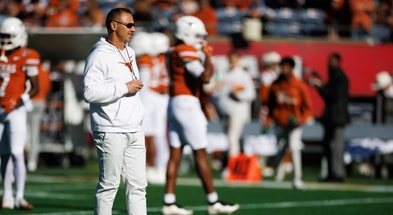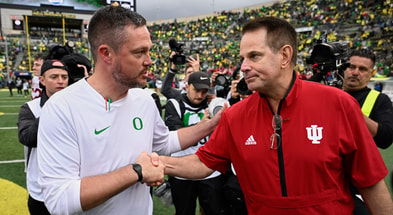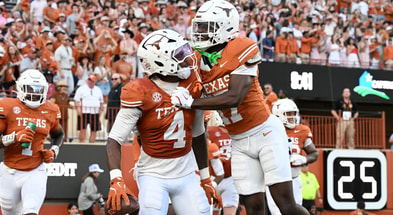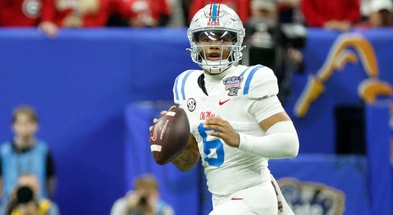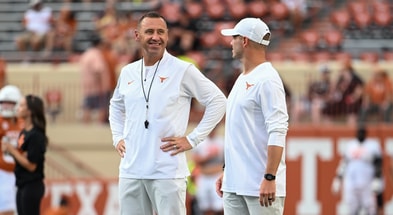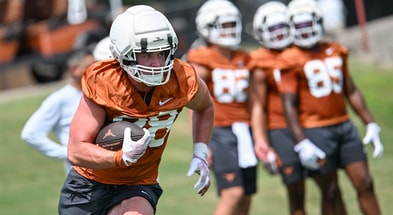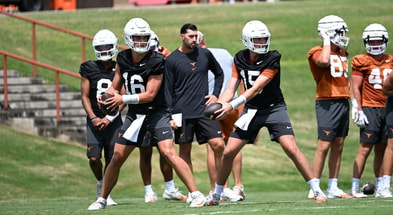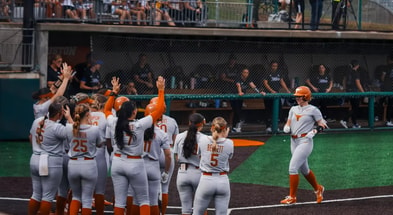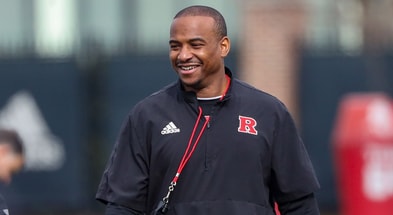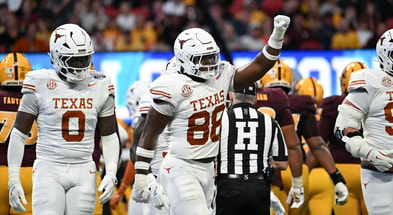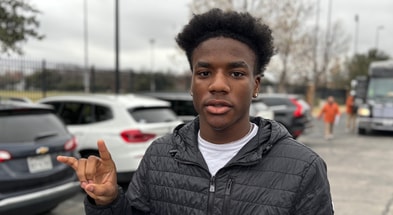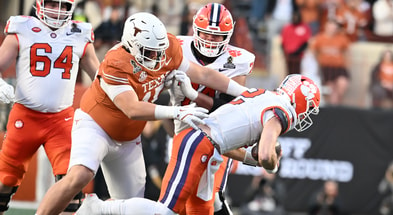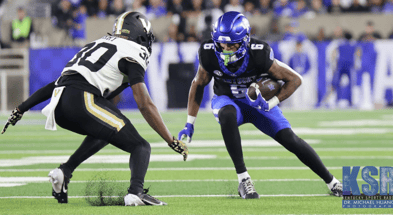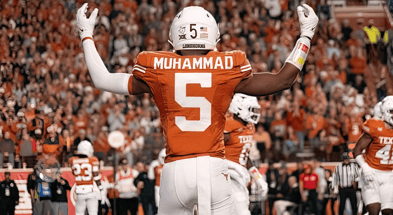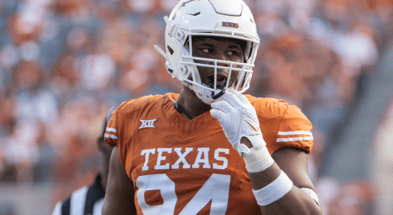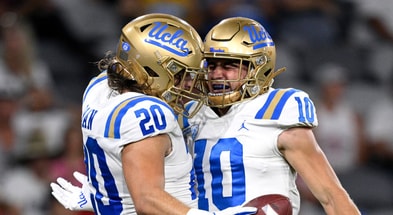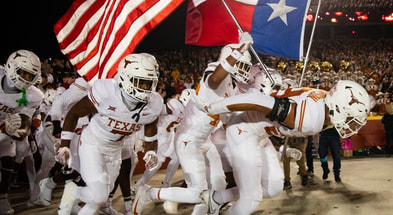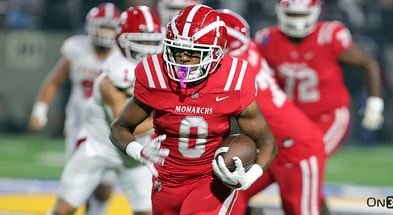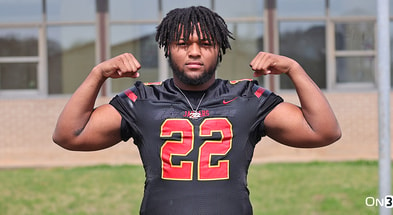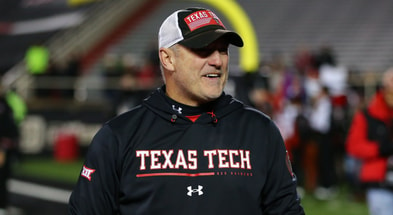Inside the Gameplan: Swoopes vs Heard
There’s a lot to see in a Spring game and loads of context and situations to pick apart. Examining each snap involves 22 different Longhorns we all want to evaluate. Obviously for the first go round on the final scrimmage of Spring practice, the biggest question is “which QB gives us the best chance to win?”
Heading into the final week of practice the word was that Tyrone Swoopes was comfortably ahead of Jerrod Heard, as you would expect from a returning starter going up against redshirt freshman, but then Charlie Strong announced that Heard was narrowing the gap.
The reason for the gap narrowing was obvious enough in the Spring game that everyone watched, Heard only threw a single INT (and Swoopes nearly threw a couple himself), showed off his incredible wheels and ability to make some throws on the run.
Conversely, Swoopes looked similar to what we saw in victories over Tech, West Virginia, and Oklahoma State before the collapse against TCU and Arkansas. With the memory of those last two losses looming in Longhorn fandom’s collective memory, the perceived lack of big time playmaking from Swoopes (which is really an unfair assumption as he did make a few good plays) cemented the preference for Heard to win the starting job and initiate the future of Texas football next fall.
Of course, there’s a fair bit more context to tease out before we make any judgments on which QB we should be hoping will seize the job come August.
Where is Tyrone Swoopes? Part 3
It’s a good thing for Swoopes we waited until now to write up part 3 rather than after TCU where he had his worst game by far.
As a refresher, we’re using the following scale to measure QB development:
Tier 1: A QB who is too limited to unlock a complete system of offense.
(Recent Big 12 example: Tyrone Swoopes in 2014)
Tier 2: A QB who has mastered a full system of offense. A “system” QB.
(Recent Big 12 example: Clint Trickett)
Tier 3: A QB who is dominant within a system of offense.
(Recent Big 12 example: Bryce Petty)
Tier 4: A QB who is good or great within a system but can also regularly create offense outside of what the system creates for him.
(Recent Big 12 example: Trevone Boykin last year, Patrick Mahomes in the near future)
Towards the end of 2014 Swoopes was getting close to becoming a Tier 2 QB and is now probably safely within those boundaries.
However, in addition to the tiers of mastery over a system, there’s also the consideration of what kind of system a QB’s skill allows him to operate. Davis Webb is capable of mastering a Kingsbury Air Raid but he’ll never be the master of KSU’s system, he just doesn’t have the athletic ability to handle the QB run-game.
Swoopes has the athletic ability to unlock a wide variety of schematic possibilities because he’s tall, powerful, has a cannon arm and the ability to accurately hit windows outside the hash marks, and is also a strong runner with serious power running north and south.
Right now he’s operating a 2nd generation dual-threat QB offense that combines the modern passing game with RPOs (run/pass options) and the ubiquitous power and zone read plays.
While often less efficient than a 3rd generation offense, this system actually requires greater skill and versatility to master. Swoopes looked comfortable with the RPO offense and occasional zone/power option plays that Watson tossed in and also showed a mastery of the passing combo that Brady and the Patriots just rode to a Super Bowl.
First the QB counts the deep safeties to choose which side of the field he wants to attack. Against the Texas D, it’s usually a single-deep safety coverage, against a Big 12 team playing Cover 4 Swoopes would work the stick route combination to the field.
Instead he reads the “Dragon” concept on the backside, reading the weakside linebacker. If the linebacker doesn’t widen to defend the quick “arrow” route to the RB, then Swoopes throws the ball there immediately. If he does, Swoopes fires a slant route past him.
Ty did some serious work on this concept, nailing the slant in one instance and abusing a blitz later by hitting the RB. Swoopes’ mastery of these types of passing game reads and throws is reaching a level that will be very difficult to defend.
He’s been effective in the RPO game as well, which often consisted of concepts like this:
You can see Jeff Traylor’s influence here in the usage of a fullback to run gap schemes in the middle of the field with pass options on the perimeter. The boundary hitch route is very useful in the events that the corner plays with too big a cushion or blitzes the edge and both Swoopes and Heard effectively punished the 2nd team corners for either strategy.
The field screen to the outside receiver would be a Cover-4 beater and so it didn’t come up in the Spring game where the defense played mostly single-high safety coverages.
Swoopes generally handled these options well and also made the right reads on the rare zone-read and power-read plays that were called. He looked outright dangerous on power read with a trip by a flailing defensive end turning what might have been a 15+ yard run into Swoopes stumbling forward for only about five yards. At least, they blew the whistle after five, Swoopes is clearly not a fun guy for DBs or even LBs to try and bring down.
So is Swoopes the right QB for Texas in 2015? Well, we have to ask what is needed for this offense to work?
A 2nd generation spread of this sort generally needs receivers who can be trusted to run good routes and then do something with the ball in their hands, a solid interior running game, a QB who can make all the reads and throws, a QB who can run option plays, an OL that avoids protection breakdowns, and a deep threat on the outside.
If you have all of those things, you’re really clicking. Texas has a QB in Swoopes who can handle the wide variety of concepts, the big question is whether he’s ready to face pressure and not make mistakes.
With Marcus Johnson and Army Foreman, Texas has a pair of really promising possession receivers. If Johnson is ahead of Foreman right now (who had some great moments and a big mistake in the Spring game), then Texas is in solid shape here.
The OL looks solid in pass protection, but they won’t be great until there’s just bigger and better experienced talent across the board. They were mostly good at avoiding penetration in the run game and Alex De La Torre was the best blocker at FB/TE, followed by Andrew Beck.
Teams with really good DL or explosive blitzers will give Texas problems next year, that’s just how it is until the talent level of the OL goes up.
Johnathan Gray looked very strong in limited spring snaps while Duke Catalon showed real promise and D’Onta Foreman was surprisingly good….I might have to change my mind on him. The Texas run game can be solid in 2015 but it’s just not going to be dominant with this collection of blockers.
It’s missing the Greg Robinson or Jay Prosch-level talents that paved the way for the 2013 Auburn run game.
Judging simply from the Orange-White game, you’d have to say that Texas isn’t looking too good on finding a deep threat as Leonard struggled to box out walk-ons (although Strickland was admittedly solid) and dropped some gimmes. Lorenzo Joe looks like an upgraded John Harris in terms of catching quick passes and trucking over smaller DBs but we’ve not yet seen him haul in deep passes.
A 2nd generation system built around Swoopes has the potential to unlock much of the ability on this roster but won’t beat top defenses until Texas finds a good dual-threat TE, Ty proves he can avoid bad mistakes, and a consistent deep threat is found.
Where is Jerrod Heard? Part 2
We evaluated Heard off his high school championship games around this time last year. Nothing he showed in Saturday’s game was too surprising if you’re familiar with what he did at the high school level.
He’s electric in the open field and he can throw a good ball on the run but he’s less decisive when making progressions and less comfortable in the pocket.
Top 10
- 1Breaking
DJ Lagway
Will continue taking visits
- 2Hot
Trinidad Chambliss
NCAA makes eligibility ruling
- 3
Justice Haynes
Enters the transfer portal
- 4Trending
Targeting Rule
CFB's enforcement is broken
- 5
Top transfer QB
Set to visit Miami
Get the Daily On3 Newsletter in your inbox every morning
By clicking "Subscribe to Newsletter", I agree to On3's Privacy Notice, Terms, and use of my personal information described therein.
Overall, Heard is a great 3rd generation dual-threat QB prospect who’s going to be at his best in a system that relies on RPOs and the run game to control the ball and features a passing game that’s largely built off the run game and includes play-action and frequent deep shots.
That’s exactly how Texas deployed him in the Spring game.
UT showed one of my favorite QB run plays on Saturday when Heard was on the field:
The QB just reads the linebackers to see if one gives chase to the running back, if they do he becomes the back on the counter run and if they don’t, he throws the quick flare to the RB.
Heard showed very little feel for this play the two times Texas ran it, first throwing it despite the linebacker chasing the play (John Bonney beat the Y receiver block and made the tackle, making it a moot point) then later backpedaling while reading the mike (can’t do that) before correctly throwing the flare late to a RB who ended up tripping on the turf anyways.
He showed some comfort with other RPOs but mastering a play like that would allow Heard to cross the Jordan into the Promised Land.
They also worked some rollout plays that allowed him to find a curl, hitch, or out route on the move or else turn up field and see what he could get with his legs. Heard seems more comfortable making decisions on the move than in the pocket and showed real ability here. It’s telling that they didn’t ask him to read pro-style progressions like Dragon-stick as Swoopes did.
Unless you were unaware of how strong an open field runner Heard is, the most exciting plays came when Heard was executing hi-low, one-read throws where Texas would send three receivers on vertical patterns with checkdowns.
He made an excellent read on one such play, eyeing first how Ty Templin was faring down the sideline before moving his eyes to the deep safety and then turning and throwing a well placed ball to Daje Johnson on a seam route.
Of course he later threw an interception trying to force the sideline route to Templin against Bryson Echols, who had an excellent day, but he showed some real promise here.
Later he was murdering the defense with a hi-low concept designed to work off Texas’ vertical passing game:
Heard was content to throw the underneath hitch route to Lo-Jo and watch him run through walk-on arm tackles. Jerrod’s throws outside the hash marks often lack some zip or placement that would buy his receivers time to make a move but Joe had plenty of time against the walk-ons to wreak havoc.
Assuming that Heard takes enough steps over the summer and 2-a-days to be a better 3rd generation QB than Swoopes, who is a 2nd generation guy, the question then becomes which system is Texas better suited to run?
A 3rd generation offense requires less skill from the receivers in running quick game routes while needing more in terms of explosiveness on screens and speed running deeper patterns. Texas might have the players to do this effectively although it would make a huge difference if Daje could get his blocking and route assignments down well enough as I’m not buying for two seconds that Jacorey Warrick offers the same kind of explosiveness.
A 3rd gen offense also needs a really strong blocking fullback and the ability to gash people in the run game. Texas is not likely to reach this level in 2015, as good at running as Heard and Gray are, due to the lack of great blocking.
Handicapping the QB competition
Swoopes is already close to ready, as you would expect since he started 12 games last season in a similar system, and will be fine-tuning this summer and next August.
Heard has turned the corner, I’m guessing in terms of his ability to make some of the simple RPO and hi-low reads they’ve installed for him, but is still in tier 1 with the need to reach tier 2 in order to catch Ty.
Then there’s the overall philosophic concerns of which system, if operated effectively, gives Texas the best chance to win in 2015? I prefer 3rd generation offense in theory, but the strength of Texas’ roster is in avoiding mistakes up front, throwing the ball to receivers like Foreman and Johnson on the outside, and freeing Gray to carry the load.
If Swoopes can accomplish that last point by running some option or RPOs, then it’s unlikely that the team will be better with Heard at the helm. While Heard probably brings a better run game, he also presents one that’s easier to outnumber and throttle due to Heard’s inability to consistently beat coverage outside and the lack of great blockers in Texas’ front.
But cheer up, Longhorn fans, there’s still a chance that Swoopes becomes a very good QB in 2014 with a chance to be dominant with returning skill players in 2015.
The best combination in 2015 will likely be something similar to what Florida did in 2006 with Swoopes as the starter but Heard operating a 4th phase unit in situations where Texas wants to pound the ball.
What’s most encouraging is Texas’ long-term direction with Heard and Kai Locksley at QB and Traylor on staff is one that could allow the ‘Horns to absolutely run over the rest of the league when all the pieces are in place. We’ll just have to be patient in waiting for that moment to come.







